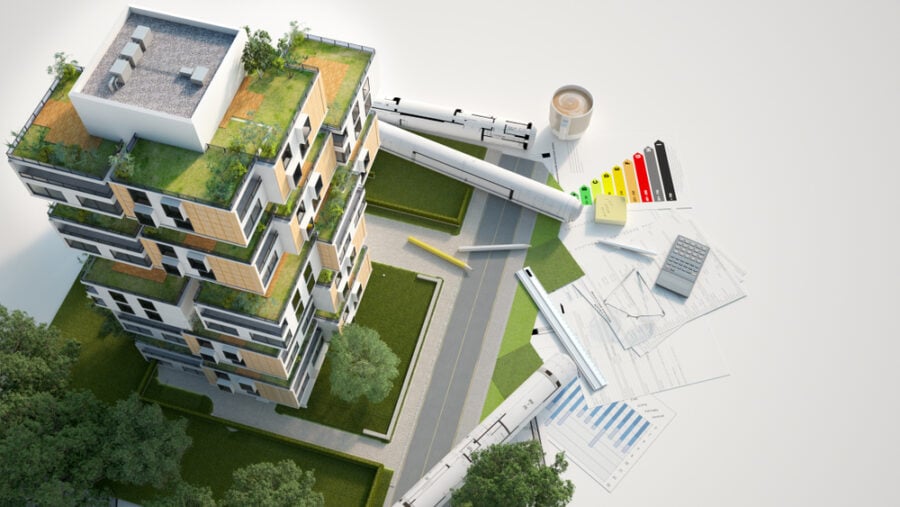Back in the day, liveability within the context of real estate had a strong correlation to buildings’ structural integrity. Brittle materials like cement thus became FMCGs. Today, buildings mostly comprise glass and a complex network of HVAC, lighting, conveyor systems, and plumbing fixtures, according to Sanjeevv Bhatia, Chairman of SB Group International & CEO of Netix Controls.

However, somewhere along the way, the industry stakeholders lost sight of buildings’ unsustainable energy usage and carbon footprint. Needless to say, a majority of the existing building stock cannot be deemed energy-efficient and sustainable. So, where do we go from here?
The answer: Efficiency-driven interventions and sustainable transformations, both powered by proptech (property and technology). There are many challenges because a majority of existing buildings are characterized by legacy BMS (building management systems) and multi-vendor systems with proprietary protocols. So, despite the inefficiencies, heavy OpEx, and high energy consumption in such systems, owners/operators have no choice but to make reactive, piecemeal interventions that fall short of the required magnitude of sustainable transformation.
What are forward-thinking owners/operators doing?
For starters, owners/operators are subscribing to the endless possibilities that data analysis in buildings can unravel. Most importantly, they are geared towards increasing connectivity and interoperability between multi-vendor systems. If they turn to original equipment manufacturers (OEMs), they are often met with expensive upgrades and fixes, requiring more capital expenditures on an already under-performing BMS.
Instead, they are opting for smart retrofitting, which, through IoT and AI capabilities, breaks down the silos between systems regardless of vendor-specific licenses. Netix Controls support such software-only interventions with partner-led hardware capabilities, further enhancing the positive outcomes. The transition to open-protocol from proprietary protocols leads to three-pronged benefits:
1- Integration that eliminates vendor dependencies
Vendor-agnostic integration of siloed systems leads to collation and subsequent analysis of energy and performance data, followed by single-window visualization of portfolio-wide operations. This data-driven insight allows owners/operators to exercise their “right to repair”, by proactively identifying inefficiencies, drilling down root causes, and conducting condition-based maintenance — all without the need for external, vendor assistance.
2- Reduction in resources and increase in ROI in buildings
Cycles of predictive maintenance, vendor-free operations, insight-led decision making, and optimization of energy-intensive systems lead to a quantifiable reduction in resources. As per Netflix’s case study, the hardware-software interplay can lead to up to a 50% reduction in OpEx and cut down the need for skilled labor by half or even less. Such possibilities are of great consequence in multi-building portfolios where costs and energy usage tend to be high.
3- Adaptive maintenance of existing building BMS systems
Maintenance is a cost center that can become burdensome in old buildings. In the case of proprietary protocols, the need for maintenance is only registered after inefficiencies prop up and energy usage increases. And maintenance activities are largely vendor-dependent. In open-protocol buildings, adaptive maintenance in the event of the slightest increase in energy usage adds to asset lifespan and, as per Netix’s study, avoids breakdowns by up to 80%.
Establishing brownfield technological foundations
The fundamental problem in the real estate ecosystem is complacency with legacy BMS and archaic operating models. However, the time has come to move to the next cycle of digital transformation, which is powered by IoT, AI, and automation. And what makes this transformation beneficial is that it doesn’t require real estate stakeholders to overhaul the existing hardware; it can be done through a mere plug-and-play retrofitting. The achievable results can be likened to outcomes in smart, state-of-the-art buildings that are energy efficient and certifiably sustainable.
Middle Eastern cities have considerable new, greenfield projects in the pipeline and fewer old buildings compared to leading cities across the globe. However, the increase in greenfield projects will also come at the expense of old buildings, which run the risk of losing their competitiveness and market desirability. At a time when digitalization and sustainability are becoming non-negotiable for discerning tenants and property buyers, such disparities can lead to a general glut in the market.
Concurrently, intergovernmental agencies and government regulators are increasingly scrutinizing buildings’ unchecked energy usage and carbon footprint. Against this backdrop of multi-faceted challenges, the real estate ecosystem requires nothing short of a brownfield revolution, wherein scores of old buildings are brought into the sustainability fold through robust technological foundations.








